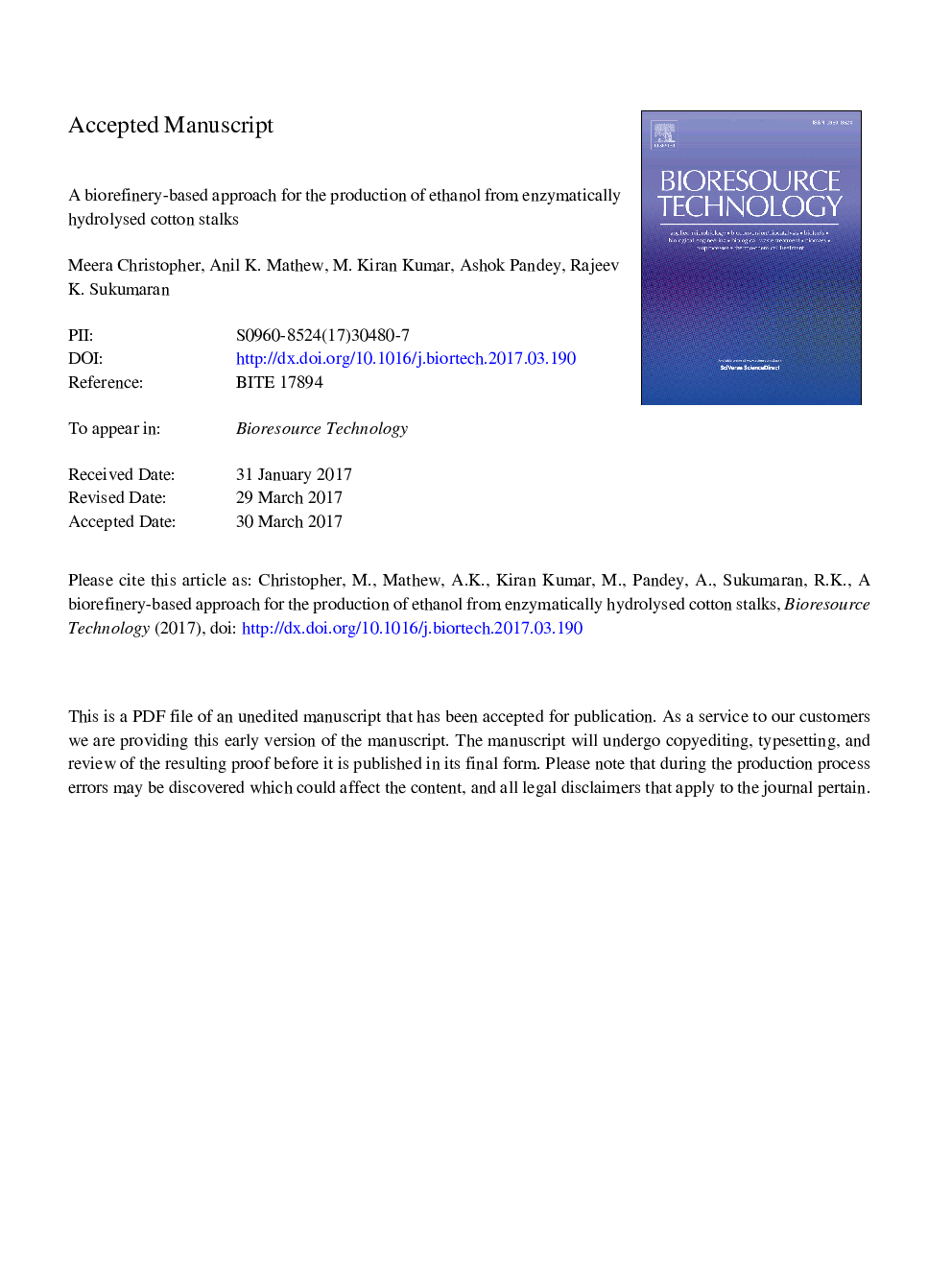| Article ID | Journal | Published Year | Pages | File Type |
|---|---|---|---|---|
| 4996488 | Bioresource Technology | 2017 | 29 Pages |
Abstract
Cotton post-harvest residue/cotton stalk (CS) - a major agro-residue in south asian countries was evaluated as a feed stock for bioethanol production. The common thermochemical pretreatment strategies based on dilute acid and alkali and different combinations of biomass hydrolyzing enzymes were evaluated for saccharification of CS biomass. A hydrolytic efficiency of 80% was achieved for alkali treated biomass using cellulase supplemented with beta glucosidase. Recycling of undigested/residual biomass and/or enzyme supported same final sugar concentration as for fresh hydrolytic experiments. Fermentation was carried out using a novel, inhibitor-resistant strain of Saccharomyces cerevisiae where 76% of theoretical maximum efficiency was attained. Material balances were derived for the entire process from biomass pre-processing to hydrolysis.
Related Topics
Physical Sciences and Engineering
Chemical Engineering
Process Chemistry and Technology
Authors
Meera Christopher, Anil K. Mathew, M. Kiran Kumar, Ashok Pandey, Rajeev K. Sukumaran,
